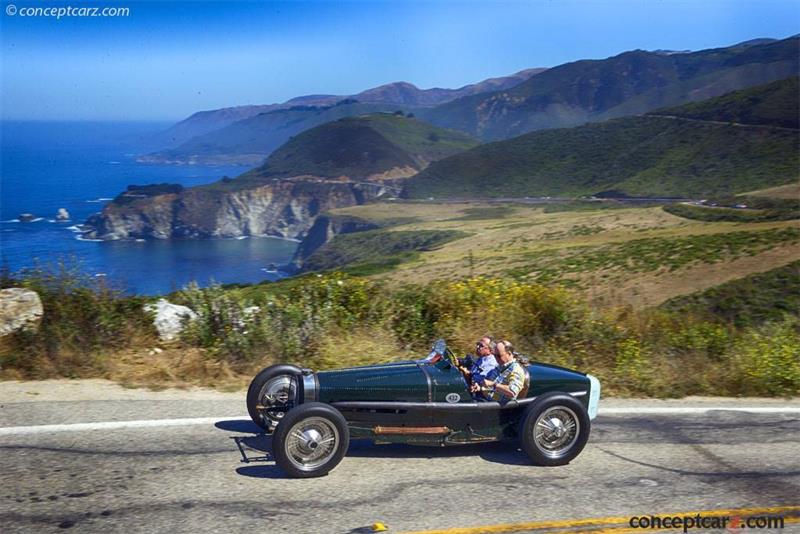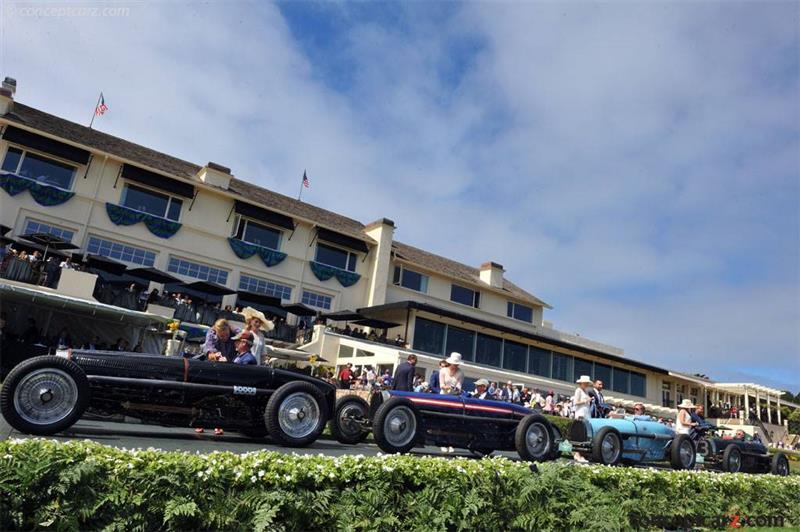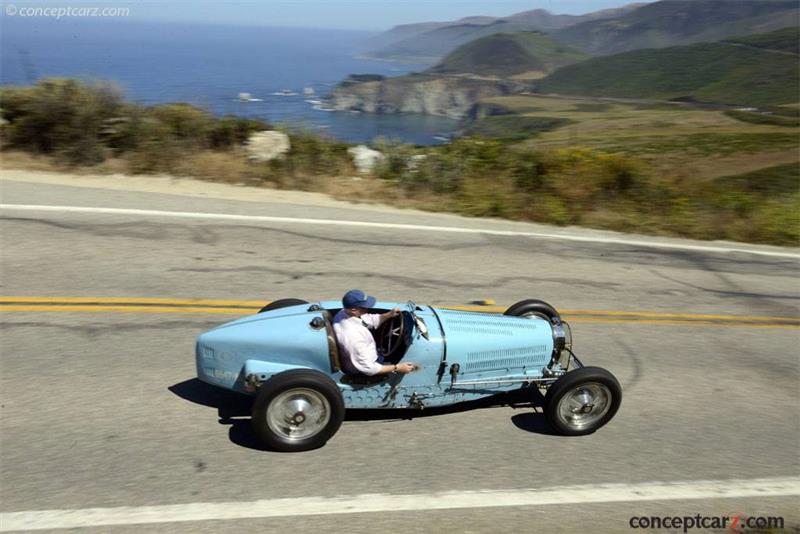The company that bore Italian-born Ettore Bugatti's surname was founded in 1909 in the then-German city of Molsheim, Alsace. Over the years, the company would produce stunning automobiles that were renowned for their elegance, beauty, and racing prowess. Although Ettore was known to explore new technologies and construction methods, he was also known to be conservative. He experimented with aerodynamics and the use of lightweight metals like magnesium. However, he refused to adopt supercharging at first, and favored cable-operated brakes, even after hydraulics had been proven superior. Despite his need to cling to old technology, the Grand Prix cars remained relatively completive. 
Boattail Grand Prix Racer
Chassis #: 59124
View info and historyThe final Bugatti race car of the 1930s was the Type 59, built for the 1934 season when the new '750 kg' weight restriction was implemented. During this time, the company was also producing the road-going Bugatti Type 57. Instead of creating a new chassis for the TYpe 59 Grand Prix car, Bugatti used the one from the previous Grand Prix Car, the Type 54. The basis of the chassis was formed from a steel ladder frame and the engine was placed low in the frame to give it a better center of gravity. To reduce weight even further, a number of holes were drilled in the chassis. At all four corners were the signature piano wire wheels and brake drums operated by the tried-and-true (albeit archaic) cables. Not surprisingly, the engine in the Type 59 was also the one found in the Type 57. The dual overhead camshaft eight-cylinder unit had a long crankshaft, six main bearings (five in the type 57), and cams driven by a set of helical-toothed gears. Bugatti had purchased two front-drive Miller 91 racing cars from Leon Duray, and then copied Harry Miller's dual overhead camshaft setup, first for his type 50. A similar design was used for the 3.3-liter straight-eight engine that was installed in the new Type 57. The Type 59 was given a dry-sump lubrication system and a Roots-type supercharger. Initially, the engine displaced 2.8 liters and was soon enlarged to just under 3.3 liters. The four-speed gearbox was placed between the engine and the rear axle. Due to the propeller shaft traversing down the center of the car, the driver's seat was offset to the right.
Boattail Grand Prix Racer
Chassis #: 59124
View info and historyThe lightweight aluminum body had the familiar horseshoe grille in the front, seating for two, and a boat tail rear end. Compared to past Bugattis, the Type 59 sat lower to the ground, due to its underslung rear suspension and dry-sump engine.Following construction delays, the Type 59 made its racing debut near the end of the 1933 season at the Spanish Grand Prix in San Sebastian. Two cars were entered and they finished in a respectable fourth and sixth place. For the start of the 1934 season, a third car had been prepared and the list of drivers included Tazio Nuvolari, René Dreyfus and Jean-Pierre Wimille. By this point in history, the original 2.8-liter engine had been enlarged, resulting in an increase in power to 250 horsepower. Notable finishes include a victory at the Belgian Grand Prix at Spa by Dreyfus, after all the top contenders had retired due to crashes. Wimille finished first at the Algiers Grand Prix. 
Boattail Grand Prix Racer
Chassis #: 59124
View info and historyThe Type 59 was a fast automobile but it had several challenges and Achilles Heels. First, Bugatti had to finance its racing program, while Italian and German manufacturers were financed by the government which deemed it a national priority to win at all costs. The cable-operated brakes on the Type 59 were among its biggest performance deficits, which made them outclassed by automobiles that embraced modern technologies. At the end of the year, Ettore Bugatti withdrew from Grand Prix racing. Four Type 59s were sold to French and British racing privateers, and it is believed that the factory retained at least two cars. They were later fitted with cycle-wing fenders and naturally aspirated engines and raced as sports cars in French events. They proved to be very successful including a one-two victory at their inaugural outing.
by Daniel Vaughan | Sep 2019
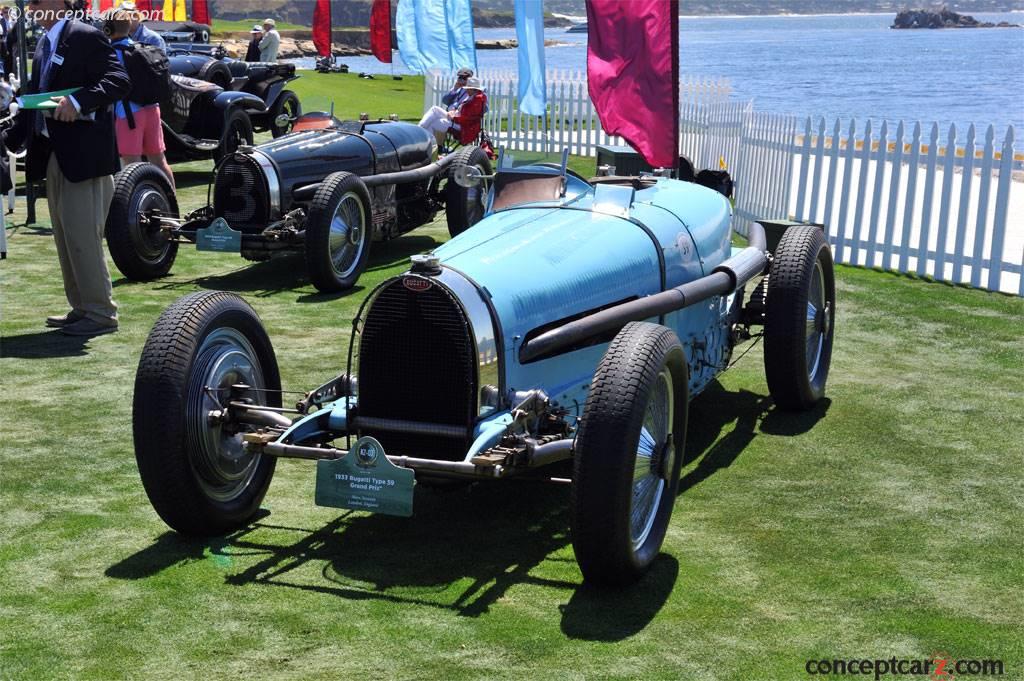
Boattail Grand Prix Racer
Chassis #: 59124
View info and history
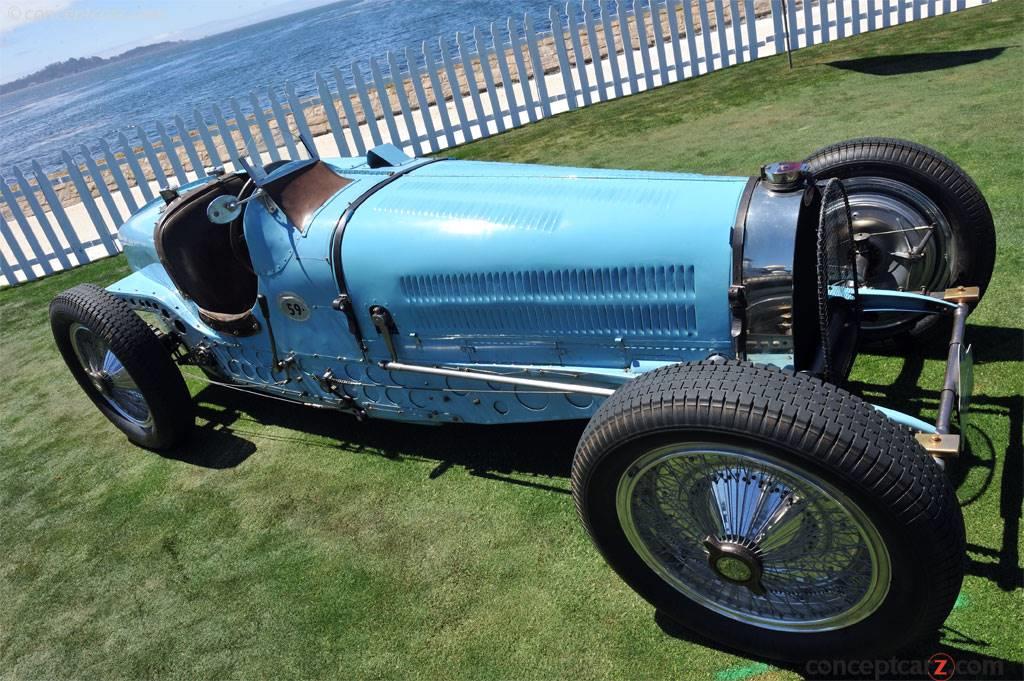
Boattail Grand Prix Racer
Chassis #: 59124
View info and history

Boattail Grand Prix Racer
Chassis #: 59124
View info and history
by Daniel Vaughan | Sep 2019
Related Reading : Bugatti Type 59 History
The Bugatti Type 59 was a continuation and the final iteration of Ettore Bugattis Grand Prix racing cars, and only a few were ever created. Between 1933 and 1936, only six or seven examples were built. They were powered by an eight-cylinder engine that originally had a bore and stroke that measured 72 x 88mm respectively in 1933 but was enlarged to 72 x 100 the following year. With the help of two....
Continue Reading >>
Continue Reading >>
1933 Bugatti Type 59 Vehicle Profiles
Recent Vehicle Additions
Related Automotive News

Bugatti Type 59 Sports – Sporting the Battle Scars of Early Grand Prix Racing
The first of the six existing Type 59 Sports racing cars – produced back in the 1930s – still exists today in near-original condition and is considered an invaluable surviving specimen of Bugattis successful racing history.
Scuffed leather seats...

Bugatti Heritage – A year of records
Classic Bugatti cars achieved record results at auctions in 2020.
image00
Historic Bugatti cars continue to rise in value. Five automotive masterpieces from Molsheim were the five most valuable vehicles sold at auction internationally in 2020....

Gooding & Company Proudly Presents 'Passion of a Lifetime' – A Masterpiece Collection of Sixteen Substantial Automobiles for Sale on 1 April 2020
Santa Monica, Calif. (22 January 2020) – Gooding %26 Company, the internationally recognized auction house, is honored to reveal the automobiles comprising the companys first-ever London sale, Passion of a Lifetime, at Somerset House in central...

A BUGATTI TYPE 51 GRAND PRIX OF ENORMOUS PEDIGREE AND SIGNIFICANCE TO BE OFFERED BY BONHAMS
FORMERLY OWNED BY EARL HOWE AND DRIVEN BY TAZIO NUVOLARI, A BUGATTI TYPE 51 GRAND PRIX OF ENORMOUS PEDIGREE AND SIGNIFICANCE TO BE OFFERED BY BONHAMS
In current ownership for 30 years, unseen for 20 years, two owners since the 1950s, and never...

Grand Prix Circuits: Pau Circuit
Some grand prix circuits just have a mythical status about them. Besides the drivers and great races, a lot of the equation comes down to how memorable the circuit truly is. In the case of the Pau Circuit, its sheer place in motorsport history and lore...

















